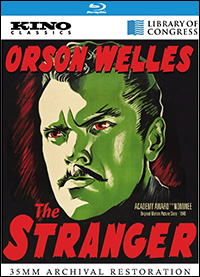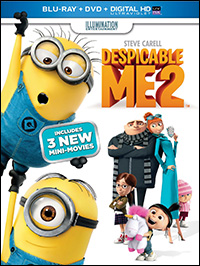
What is the best Charlie Chaplin film? Impossible to say. The triumvirate, I suppose, are "The Gold Rush," "City Lights" and "Modern Times." My favorite — and, it is said, Chaplin's favorite — is the 1931 "City Lights" [Criterion]. Stubbornly refusing to switch to talking pictures, the director incorporated sound — effects, music, and mumbo jumbo — into the proceedings. Being naturally innovative, everything he did was skillful and effective.
"City Lights" is a tale of the Tramp character in the modern Metropolis. But this is not the carefree Tramp of the earlier films; he stumbles across a blind flower girl who gives him purpose in life. The scenes with the girl, Virginia Cherrill — Chaplin underwent an enormous struggle to get what turned out to be a perfect performance out of her — range from comedy to slapstick to pathos to tenderness. The final sequence, in which the now-seeing girl realizes that her benefactor is not some dreamed-of millionaire but poor Charlie, remains one of the most emotionally satisfying moments in the world cinema. Cherrill wasn't much of an actress, but "City Lights" is a perfect role for her. Her second-biggest claim to fame: She was the first of the five Mrs. Cary Grants, for seven months anyway.
The comic centerpiece of the film remains the boxing match, a marvel of movement and choreography. Charlie, matched against a mountain of a man (Hank Mann), somehow manages to keep the referee between them. Mostly, anyway. This is a sequence which you really can't watch just once. And speaking to Chaplin's use of sound in non-talking pictures, he uses the timekeeper's bell as a comic component of the bout.
We have been given clearer and clearer restorations of Chaplin films for some years now. This new digital restoration from Criterion almost makes "City Lights" look like it was filmed yesterday, in black and white. Well, not exactly; but under these circumstances, the faded and shaky look of 80-year-old films is just about absent. Many of the existing bonus features from prior releases are included, along with a new audio commentary by Chaplin biographer Jeffrey Vance. The booklet includes an essay by Gary Giddins, along with Chaplin's own comments about the film from a 1967 article in Life Magazine. The Criterion Blu-ray comes in a dual-format edition; that is, they include a separate DVD so you can watch "City Lights" anywhere!
* From Chaplin to Welles. There actually was a connection between the pair of genius actor/directors. Orson Welles came up with a screenplay in 1944 about a modern-day Bluebeard who marries wealthy widows and kills them off, based on the infamous Henri Landru (who murdered ten women during World War I). Chaplin considered the project but turned it down — he apparently couldn't see himself taking direction from anyone, even Welles — but within a few years wrote, directed and starred in his own "Monsieur Verdoux" in 1947. (Welles received credit, and payment, for the idea.) Instead of the Landru movie, Welles made "The Stranger" [Kino] in 1946 — and if you listen closely, you will hear a rueful line about Landru.
"The Stranger" was Welles' third film, following the classic "Citizen Kane" and the fascinating but artistically-compromised "The Magnificent Ambersons." "The Stranger" is wonderful film noir, similar in tone and suspense to Hitchcock's "Shadow of a Doubt"; it is also, we are told, the only Welles film to make a profit on its original release.
| |
 |
|
| Cover art |
This relatively little-known film has always been a special pleasure, but the new Blu-ray makes a major difference in the viewing experience. "The Stranger" had unaccountably been allowed to lapse into the public domain in 1973; when the home video business was established a few years later, there was thus no owner to provide high-quality materials for transfer. As a result, the DVD market has been strewn with releases of indifferent quality. For this edition, Kino has joined with the Library of Congress, which had an original print of the film, to give us "The Stranger" as it was always meant to look.
Welles is his usual creative self; this black and white film is all shade and shadows, with pools of darkness and splintered shards of light. Welles uses light psychologically, and what has always looked fuzzy turns out to be carefully calculated. The film is no better now than it was then, but the new mastering allows us to see and appreciate what Welles did while putting enhanced thrills in the thriller. We also can see how he carefully kept himself — as a portrait of modern-day evil — in those splinters of light.
Welles and Robinson, both, give masterful performances. Young does not; to modern-day eyes, this seems like a primer in overacting but doesn't harm the film's effectiveness. There's also a canny character-actor performance by an actor named Billy House, as a small-town druggist and all-round busybody. Whenever he goes to play checkers with Robinson, Welles has him eagerly reach for a casino dealer's visor. (House, a former vaudevillian, was popular with Disney animators; he served as live-action model for Doc in "Snow White" and Smee in "Peter Pan.")
In a film filled with images, the most powerful is the New England clock tower. (Kindler was known to be an expert clock restorer, which is how Wilson uncovers his identity.) The clock is in the background of dozens of shots, and the action culminates with a chase through the tower — and with a memorable meeting between the star/villain and a medieval statue with a sword that circles when the hour strikes! Welles also introduces a more sinister image: Excerpts from footage taken when the Allies liberated the concentration camps. This is somewhat incidental to the action — it is used to try to convince Mary of her husband's true identity — but the filmmaker makes a strong statement at a time when this footage had not been widely seen. (Welles presumably sought to garner public support for the Nuremberg Trials, which were still underway when the film was released).
This footage is taken from a propaganda documentary produced by the U.S. Department of War called "Death Mills," which was used to educate the German public and American officials about what had taken place. Austrian-born Billy Wilder, who had just finished "The Lost Weekend" — and who lost his mother, step-father and grandmother in the war — directed. In a surprising but welcome bit of packaging, Kino has added the full "Death Mills" as a bonus feature. While this makes difficult viewing, it is just as impactful today as it must have been in 1945 — although today's audience cannot be quite so surprised by what they see. Most striking, along with the footage of countless piles of corpses plus survivors who look like living skeletons, are shots of wooden crates filled with wedding rings and bales human hair (in varied colors) that were sold to local wigmakers. (Nowhere in "Death Mills," by the way, do they mention the religion of the victims.) The 22-minute film ends with a chilling sequence in which the authorities force local villagers to tour the camps in their neighborhoods. They go in laughing and joking, as if prepared for a picnic; they come out shocked, as if they've witnessed their own death.
| |
 |
|
| Cover art |
"Despicable Me 2" is also subversively clever and exceedingly funny. The first film told of arch-villain Dru — he steals the moon — who finds himself altogether reformed by three cute orphans he has adopted. The sequel shows the caring father, who now uses his "mad scientist" powers to manufacture jams and jellies, being called back into the spy business to foil a dastardly plot. The humor is so fast and warped that you can't help but sit back and root for all those bright yellow, gibberish-speaking Minions who populate Dru's droll universe.
The Blu-ray, which is accompanied by a DVD and a downloadable digital copy, includes commentary by the directors, features on those adorable Minions, and "3 new mini-movies starring the Minions."
(Steven Suskin is author of "Show Tunes", "The Sound of Broadway Music: A Book of Orchestrators and Orchestrations," "Second Act Trouble," the "Broadway Yearbook" series and the "Opening Night on Broadway" books. He also writes the Aisle View blog at The Huffington Post. He can be reached at [email protected]).










